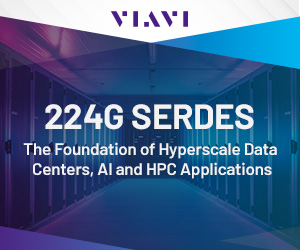
In the current landscape of technological prowess, businesses are rapidly moving to the cloud. NetApp’s latest Data Complexity Report reveals that 98% of global organisations are on this journey. Interestingly, three out of four still depend on on-premises storage, emphasising the ongoing importance of in-house infrastructure. Unified data storage is said to take a major leap in 2024.
This data emphasises the need for a unified approach to hybrid multicloud architectures in 2024 and beyond. Such an approach seamlessly combines on-premises all-flash storage with public cloud solutions, ensuring top-notch performance and accessibility.
As the industry continues to move towards widespread adoption of AI at scale, 2024 is poised to see unified data storage solutions take centre stage, and here’s why:
Cloud Adoption: Businesses today have a unique opportunity to strategically align their IT infrastructure with the evolving needs of an increasingly digital and interconnected world. In the near future, this alignment will enable agility and scalability for future growth and innovation. However, it’s important to note that cloud migration is not a linear process. Among tech executives planning to migrate workloads to the cloud, three out of four still retain the majority of their workloads on-premises. More precisely, 84% of the organisations are either in the mid-journey or in the mature phase. Integrating AI into this dynamic landscape further enhances the potential for transformative innovation and efficiency gains.
The Rise of AI: India’s swift adoption of AI prioritises GenAI, the leading use-case for AI in the country. It emphasises boosting performance, cost efficiency, and highlights the crucial role of flash innovation in supporting AI and ML workloads.
The pivotal force propelling cloud migration is the widespread embrace of AI, as evidenced by our findings, where a substantial 74% of respondents leverage public cloud services for AI and analytics. Tech executives across the globe resoundingly articulate the essentiality of Flash innovation in optimizing AI performance, cost, and efficiency, with a notable 39% acknowledging its crucial role.
Enterprises are progressively integrating AI into their frameworks, with a significant emphasis on harnessing generative AI and tapping into public cloud AI and analytics services. As AI becomes more ingrained in infrastructure, IT leaders advocate for augmented funding, with 63% of AI budgets stemming from new funding sources. The anticipation is palpable, with leaders expecting to forge alliances with new vendors to navigate the expanding influence of AI within their organisational framework.
Data Security & Protection: In the era of AI, security threats are a major concern for C-level executives and IT decision-makers in India. A majority of Indian IT leaders see data security as the primary challenge for realising AI’s potential, with security threats ranking as the leading cause of complexity in storage infrastructure. NetApp’s report underscores the critical role of AI in safeguarding against cyber threats. Moreover, executives consider ransomware attack mitigation as a top priority, emphasising the indispensable nature of AI in addressing these challenges. Notably, companies anticipate it would take days or weeks to recover from cyberattacks, underscoring the significant risk posed to their business and reinforcing the crucial role of AI in fortifying cybersecurity measures.
Sustainability: A growing number of Indian organisations now view mitigating environmental impact not only as an option but as an essential aspect of their sustainability efforts. This commitment extends to flash storage innovation, where prioritising energy and carbon footprint metrics is deemed crucial for future sustainability. The Data Complexity Report underlines the significance of sustainability as a critical factor in choosing storage vendors, with a notable percentage recognising the reduction of energy and carbon footprint as integral to responsible AI practices. Moreover, a substantial majority agrees that reducing their company’s carbon footprint is a vital aspect of broader sustainability initiatives. This underscores the imperative for forward-thinking organisations to align AI advancement with environmental responsibility in navigating the rapidly evolving technological landscape.
The Cloud-Driven Flash Storage Revolution
Looking ahead, cloud-enabled flash storage will reshape technological innovation and business operations. As organisations tackle data complexity, integrating this technology will be crucial for agility, scalability, and efficiency in handling AI-driven workloads. Leveraging this transformative tech will help businesses adapt to digital demands, fostering streamlined operations, better performance, and accelerated innovation for success in the global market.
May it be structured or unstructured data, Unified Data Storage gives capability to operate under one environment. Unified Data Storage operates from a single operating environment of data storage integrated with data services, delivering operational simplicity.
To Read The Full Report: https://www.netapp.com/pdf.html?item=/media/98131-2023-data-complexity-report.pdf




